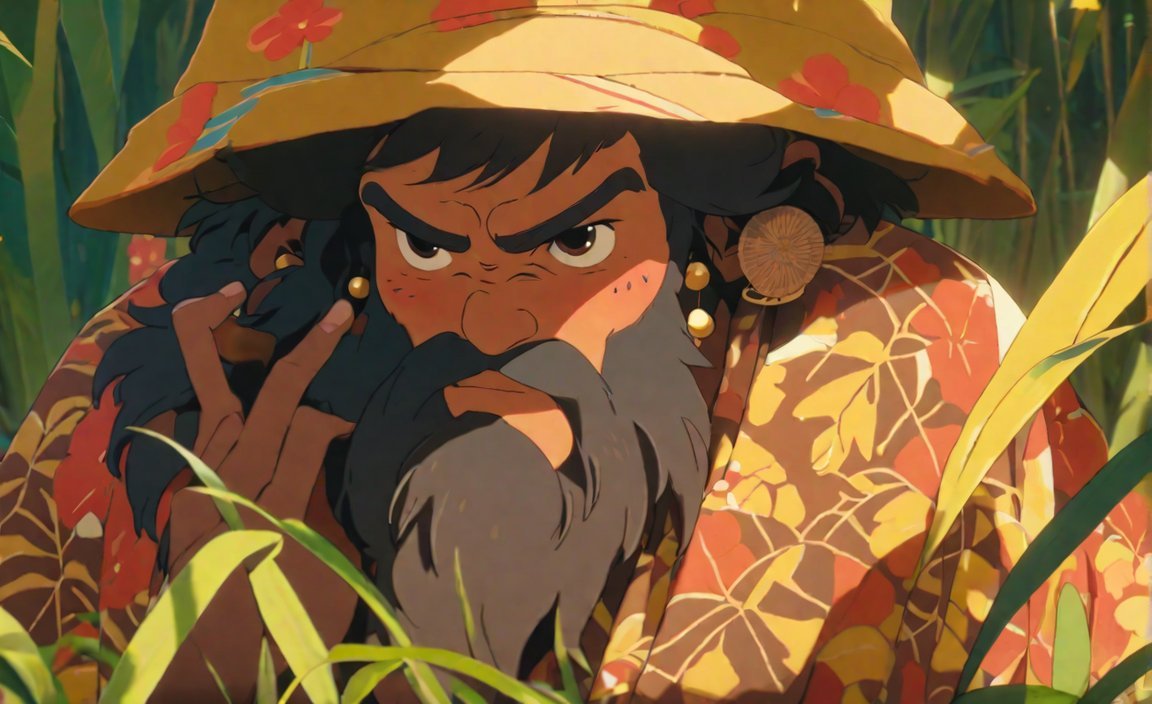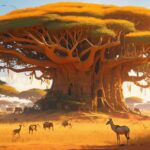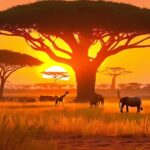Get ready to be amazed by the fascinating fun facts about Uganda’s rich cultural heritage, wildlife wonders, and breathtaking landscapes. From uncovering hidden gems to exploring lesser-known aspects of this East African country, we are here to provide you with an informative and entertaining journey. Join us as we delve into the captivating stories and engaging insights that showcase Uganda’s unique and vibrant character. Let’s embark on this adventure together and discover the incredible beauty and surprises that await in Uganda.
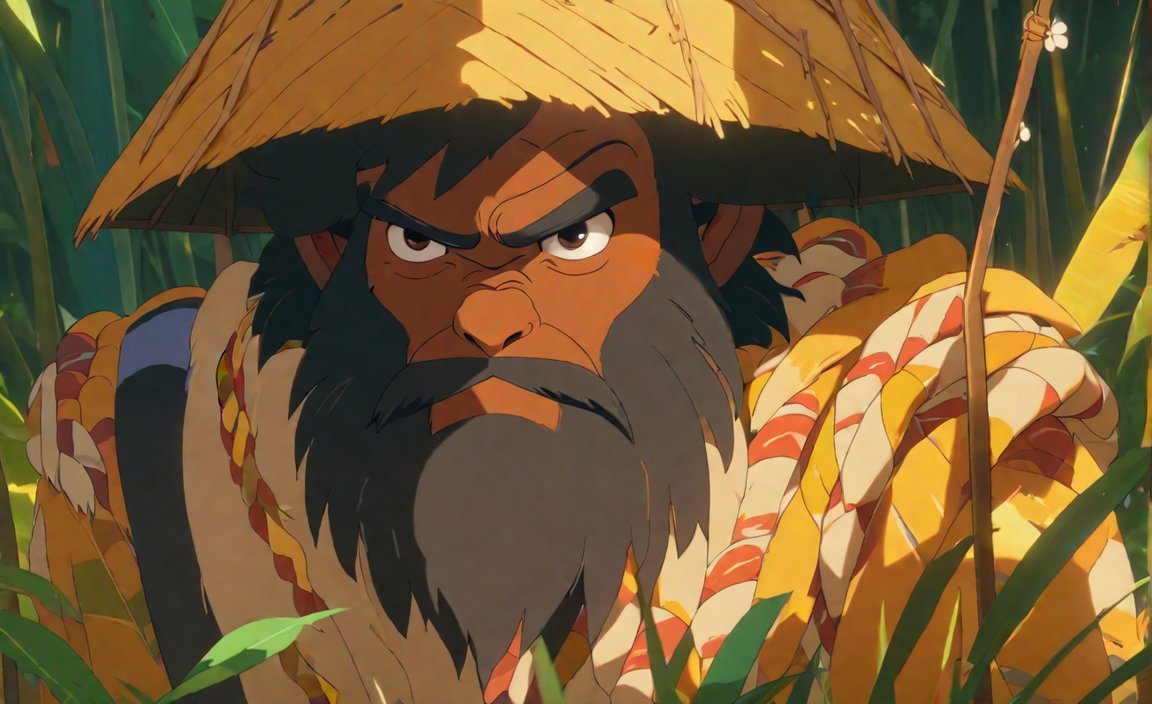
Key Takeaways:
– Uganda is home to Lake Victoria, the second-largest freshwater lake on Earth.
– The equator runs through Uganda, making it one of the few countries in the world with both the northern and southern hemispheres.
– The national bird of Uganda is the grey-crowned crane, which is also featured on the country’s flag.
– Kampala, the capital city of Uganda, is one of the fastest-growing cities globally and serves as the economic, political, and cultural hub of the country.
– Motorcycles and scooters are called “bodabodas” in Uganda and are a popular mode of transport.
– Twins hold a special significance in Ugandan culture and are celebrated with ceremonies and gifts.
– English and Swahili are the official languages of Uganda, but over 40 other languages are spoken in the country.
– Uganda is unofficially known as the Matooke Republic due to its staple food made from green bananas, which are culturally and culinary significant.
Fun Facts About Uganda
Uganda, a captivating country located in East-Central Africa, is a treasure trove of fascinating facts that will leave you intrigued. From its breathtaking landscapes to its rich cultural heritage and remarkable wildlife wonders, Uganda offers a unique and memorable travel experience. Let’s dive into some of the most delightful and surprising fun facts about Uganda.
1. Lake Victoria: The Majestic Water Wonderland
When it comes to impressive natural landmarks, Uganda is home to the second-largest freshwater lake on Earth—Lake Victoria. With a surface area of more than 26,000 square miles, this vast body of water is truly a sight to behold. Its sparkling blue waters not only provide a stunning backdrop to the surrounding landscapes but also support a diverse ecosystem, teeming with various plant and animal species.
2. Equator Crossing: Standing in Two Hemispheres at Once
Uganda is one of the lucky few countries that straddle the equator, offering an extraordinary opportunity to stand in both the northern and southern hemispheres simultaneously. This unique geographical positioning allows visitors to experience the thrill of balancing between two parts of the world at once, making for a memorable and Instagram-worthy moment.
3. The Graceful Grey-Crowned Crane
The national bird of Uganda is the elegant grey-crowned crane. This exquisite bird not only holds the prestigious title of being Uganda’s national symbol but also graces the country’s flag with its majestic presence. As a symbol of grace and beauty, the grey-crowned crane is deeply cherished in Ugandan culture and serves as a reminder of the country’s commitment to preserving its natural heritage.
4. Kampala: A City on the Rise
Nestled within Uganda is Kampala, the vibrant capital city of this charming country. Demonstrating its dynamic spirit, Kampala has earned its reputation as one of the fastest-growing cities in the world. With a bustling atmosphere that blends economic, political, and cultural influences, this energetic metropolis serves as a focal point for exploration, excitement, and discovery.
5. Bodabodas: A Thrilling Ride Around Town
In Uganda, getting around urban areas is an adventure in itself, thanks to the popular mode of transport known as “bodabodas.” These motorcycles and scooters navigate the bustling streets, offering a cheap and convenient way to travel. Hop on a bodaboda and experience the thrill of zipping through traffic, immersing yourself in the vibrant local atmosphere.
6. Celebrating the Unique Status of Twins
Within Ugandan culture, twins hold a special place of honor and celebration. The arrival of twins is commemorated with meaningful ceremonies and thoughtful gifts, highlighting their unique status within the community. This rich tradition not only reflects the cultural values of togetherness and community but also emphasizes the belief in the inherent beauty and significance of every individual.
7. Language Diversity: A Tapestry of Communication
Uganda’s linguistic landscape is a marvel in itself. While English and Swahili serve as the official languages, Uganda boasts an astonishing range of over 40 other languages spoken throughout the country. This linguistic diversity is a testament to the cultural tapestry that makes up Uganda, inviting visitors to immerse themselves in a multitude of vibrant traditions and languages.
8. Welcome to the Matooke Republic
Uganda is affectionately known as the Matooke Republic, a playful nickname inspired by the country’s staple food. Matooke, a delicious dish made from green bananas, holds great cultural and culinary importance in Ugandan cuisine. Embracing this national delicacy allows you to savor the flavors of Uganda and appreciate the deep-rooted connections between food, culture, and identity.
These fun facts provide just a glimpse into the wonders that await you in Uganda. From the vastness of Lake Victoria to the thriving city of Kampala, this East African gem offers a blend of breathtaking landscapes, captivating wildlife, and rich cultural heritage. So, pack your bags and embark on a journey to Uganda, where every step reveals a new and delightful surprise.
To learn more about Uganda and its fascinating features, consider visiting the following sources:
- Easy Science for Kids: Explore this educational website for engaging content about Uganda and its various aspects.
- The Adventurous Feet: Discover more intriguing facts about Uganda, including its unique time concept and delightful culinary traditions.
Fun Facts About Flowers – Did you know that flowers have been used for centuries to convey messages and emotions? Discover more interesting facts about flowers here!
Muscular Fun Facts – Have you ever wondered how many muscles are in the human body? Click here to explore fascinating facts about the muscular system!
Shoe Facts – Step into a world of intriguing shoe facts and uncover the history and evolution of this essential footwear accessory. Check it out now!
Copper Fun Facts – Did you know that copper is the only metal that is naturally antibacterial? Delve into a collection of captivating facts about copper and its diverse uses by clicking here!
Fun Facts About Milk – Milk is not just a delicious beverage, but it also contains essential nutrients for our body. Discover surprising and informative facts about milk by clicking this link!
Fun Facts About Biologists – Embark on a scientific journey and learn fascinating facts about biologists and their contributions to the world of biology. Click here to explore more!
10 Facts About the Western Wall – Learn about the historical significance and awe-inspiring details of the Western Wall with these ten intriguing facts. Start exploring now!
Uganda: The Pearl of Africa – A Land of Magnificent Sceneries and Abundant Wildlife
Uganda, known as the ‘Pearl of Africa’ due to its stunning natural beauty and diverse wildlife, is a country that captivates the imagination of travelers. With its breathtaking sceneries, abundant wildlife, and rich cultural heritage, Uganda is a destination like no other. Let’s explore some fascinating fun facts that make Uganda truly special.
1. Diverse and Stunning Landscapes
Uganda offers a wide range of natural beauty, making it a paradise for nature lovers. From hilly and mountainous areas to flat plains, waterfalls, lakes, streams, and forests, the country’s landscapes are truly enchanting. The highlight of Uganda’s natural wonders is the iconic Mount Rwenzori, also known as the Mountains of the Moon, with its snow-capped peaks and extraordinary biodiversity.
2. Abundant Wildlife
When it comes to wildlife, Uganda is a treasure trove. The country is home to some of the most magnificent creatures on Earth. The famous mountain gorillas are undoubtedly the stars of Uganda’s wildlife scene. Trekking through the lush rainforests of Bwindi Impenetrable National Park or Mgahinga Gorilla National Park to observe these gentle giants in their natural habitat is an awe-inspiring experience.
But the wildlife doesn’t end there. Uganda also boasts the chance to encounter chimpanzees, lions, elephants, leopards, and buffaloes—the renowned Big Five animals. Exploring the national parks, such as Queen Elizabeth National Park and Murchison Falls National Park, is a must for wildlife enthusiasts.
3. Adventurous Activities
Uganda offers an array of thrilling activities for adventurers and tourists. The thrilling gorilla trekking experience was mentioned earlier, but that’s just the beginning. Safaris provide opportunities to spot wildlife in their natural habitat, while multiday mountain treks, including climbing Mount Rwenzori, offer unforgettable adventures for outdoor enthusiasts.
For those seeking an adrenaline rush, white-water rafting in the Nile River is an exhilarating experience. Picture yourself navigating through roaring rapids and stunning gorges. It’s an adventure of a lifetime.
4. Vibrant Culture and Warm Hospitality
Uganda’s cultural heritage is an integral part of its identity as the Pearl of Africa. The country is home to various ethnic groups, each with its rich traditions and customs. Ugandans are known for their warm hospitality and welcoming nature, making visitors feel truly embraced and valued.
Key Takeaways:
– Uganda is often referred to as the ‘Pearl of Africa’ due to its stunning natural beauty and diverse wildlife.
– The country’s landscapes range from hilly and mountainous areas to flat plains, waterfalls, lakes, streams, and forests, offering a wide variety of natural beauty.
– Uganda is famous for its mountain gorillas, and gorilla trekking is a popular activity for visitors.
– The country is home to the Big Five animals, including lions, elephants, leopards, buffaloes, and the rare mountain gorillas.
– Adventurous activities such as white-water rafting in the Nile River and multiday mountain treks provide thrilling experiences.
– Ugandan culture is vibrant, and the warm hospitality of the people adds charm to the visitor’s experience.
Sources:
1. Uganda: The pearl of Africa – BBC Travel
2. Why Uganda is called the Pearl of Africa – followalice.com
The Cultural Diversity of Uganda: A Tapestry of Indigenous Languages
Uganda, known as the “Pearl of Africa” for its stunning natural beauty and diverse wildlife, has much more to offer than meets the eye. Beyond its breathtaking landscapes and rich wildlife wonders, Uganda shines as the most culturally diverse country in the world. This diversity is showcased through over 50 different indigenous languages spoken throughout the country.
A Tapestry of Indigenous Languages
Uganda is home to a remarkable tapestry of cultural diversity, reflected in its linguistic landscape. With over 60 distinct groups of people and more than 30 indigenous languages, the country embraces a vibrant mosaic of linguistic traditions. The cultural diversity of Uganda is showcased through over 50 different indigenous languages spoken in the country. Each indigenous language represents a unique heritage and contributes to the rich cultural fabric of this East African nation.
A Melting Pot of Ethnicities
Beyond its linguistic diversity, Uganda is a melting pot of different ethnic groups and tribes. With approximately 65 ethnic groups spread across the country, Uganda celebrates the richness of its multicultural society. The largest ethnic group, the Baganda, accounts for 16.5% of the population, making their traditions and customs a significant part of Ugandan culture. Additionally, ethnic groups such as the Banyankole, Basoga, Bakiga, and Iteso also contribute to the diverse cultural tapestry of the nation. Each group brings its own unique traditions, music, dance, and artistry, showcasing the fascinating intricacies of Ugandan culture.
Kingdoms and Cultural Heritage
Uganda’s cultural heritage is deeply rooted in its regional kingdoms. These kingdoms, including Buganda, Busoga, Bunyoro, and Toro, hold tremendous historical and cultural significance. They serve as pillars of identity and pride for the people of Uganda. The kingdoms have preserved their traditions and languages, making them invaluable repositories of the nation’s cultural wealth.
Recognition and Respect for Cultural Diversity
Uganda’s commitment to cultural diversity goes beyond mere celebration; it is enshrined in the country’s cultural policy. The protection and promotion of cultural diversity are essential aspects of Uganda’s cultural agenda. Regardless of the size of the cultural groupings, the policy recognizes the equal dignity and respect for all indigenous Ugandan cultures. This inclusive approach ensures that the beauty and uniqueness of each culture are valued and preserved for generations to come. UNESCO plays a crucial role in supporting Uganda’s cultural policy and fostering cultural exchanges within the country and beyond.
Key Takeaways:
- Uganda boasts over 50 different indigenous languages, showcasing its unparalleled cultural diversity.
- The country is home to approximately 65 ethnic groups and tribes, each contributing their own traditions and customs.
- Uganda’s rich cultural heritage is exemplified by regional kingdoms, including Buganda, Busoga, Bunyoro, and Toro.
- Uganda’s cultural policy promotes and protects the equal dignity and respect for all indigenous Ugandan cultures.
With its linguistic tapestry and diverse ethnicities, Uganda’s cultural richness transcends borders and invites visitors to immerse themselves in its fascinating tapestry of traditions and languages.
Uganda’s Rich History: Uncovering Ancient Times
Paleolithic Beginnings and the Spread of Bantu-Speaking People
Uganda has a rich history that dates back to ancient times, with evidence of human settlement over 50,000 years ago[^1^]. During the Paleolithic era, our ancestors roamed the lands of present-day Uganda, leaving behind traces of their activity and forging the foundations of the country’s history.
As time progressed, Bantu-speaking people appeared on the stage, bringing agriculture and iron-forging technology with them around 400 BCE. Furthermore, they cleared the land and expanded throughout sub-Saharan Africa, shaping the region into what it is today[^1^]. The influence of these early settlers can still be felt in Uganda’s vibrant cultural tapestry and diverse ethnic groups.
British Colonization and the Impact of Indian Traders
In the late 19th century, Uganda fell under British colonization and became a protectorate in 1894[^1^]. During the construction of the Uganda Railway, an astounding feat that required the collective effort of 32,000 laborers from British India, a significant number of Indians decided to remain in East Africa[^1^]. They became traders, establishing their presence and gaining control of cotton ginning and retail, which would have lasting effects on Uganda’s economy and cultural landscape.
Epidemic and Independence: Struggles and Triumphs
As the 20th century unfolded, the southern part of Uganda faced the devastating effects of an epidemic of sleeping sickness, leading to the untimely deaths of over 250,000 people[^1^]. This tragic chapter in Uganda’s history serves as a testament to the resilience and determination of its people.
Despite the hardships, Uganda gained independence from Britain in 1962, marking a turning point in its history. Milton Obote became the first Prime Minister, and the country maintained its membership in the Commonwealth, transitioning into a republic shortly after[^1^]. However, political tensions emerged, reflecting the diverse aspirations of the Ugandan people, with debates around the centralization of power and the role of local kingdoms.
The Dark Era of Dictatorship and Economic Fallout
Tragedy struck again in 1971, when a military coup led by Idi Amin toppled Obote from power, plunging Uganda into a dark era of dictatorship. Amin ruled with an iron fist, carrying out widespread mass killings that scarred the nation’s collective memory[^1^]. Furthermore, in 1972, under the Africanization policy, thousands of ethnic Indians with British passports were forcibly expelled from Uganda, devastating the country’s economy[^1^].
Key Takeaways:
- Uganda’s history dates back over 50,000 years, with evidence of human settlement during the Paleolithic era.
- Bantu-speaking people introduced agriculture and iron-forging technology to the region around 400 BCE.
- British colonization in the late 19th century and the construction of the Uganda Railway brought Indian traders, who played a significant role in the country’s economy.
- The epidemic of sleeping sickness caused immense loss of life in the early 20th century.
- Uganda gained independence in 1962 but faced political tensions between supporters of centralization and those favoring local kingdoms.
- Idi Amin’s dictatorship from 1971 resulted in widespread violence and the expulsion of ethnic Indians, causing economic decline[^1^].
Sources:
[^1^]: Wikipedia contributors. (2021, October 24). History of Uganda. In Wikipedia. Retrieved November 26, 2021, from
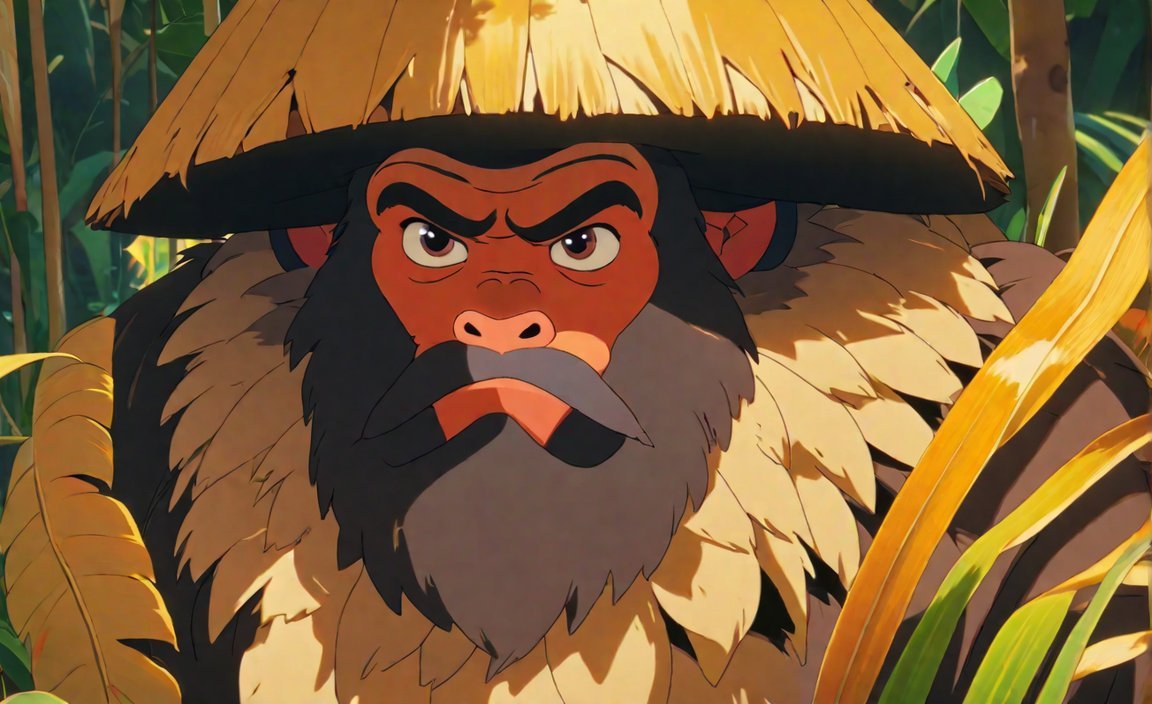
FAQ
Q1: What is the official language of Uganda?
A1: The official languages of Uganda are English and Swahili, reflecting its linguistic diversity.
Q2: What is the significance of the grey-crowned crane in Uganda?
A2: The grey-crowned crane is the national bird of Uganda and is featured on the country’s flag. It symbolizes grace and beauty.
Q3: Why is Uganda known as the “Matooke Republic”?
A3: Uganda is unofficially known as the Matooke Republic because matooke, a dish made from green bananas, is a staple food and holds cultural and culinary importance in Ugandan cuisine.
Q4: What mode of transportation is popular in Uganda?
A4: Motorcycles and scooters, known as “bodabodas,” are a cheap and popular mode of transport, especially in urban areas of Uganda.
Q5: How diverse is Uganda’s cultural heritage?
A5: Uganda is the most culturally diverse country in the world, with over 60 groups of people and over 30 indigenous languages. The diverse ethnic groups and tribes contribute to the rich cultural heritage of the country.
- Senior at What Age: Benefits & Eligibility Guide - March 29, 2025
- Unlocking Senior Benefits: How Old is a Senior? Your Complete Guide - March 29, 2025
- Master Russian Politeness:A Guide to Saying Please - March 29, 2025
